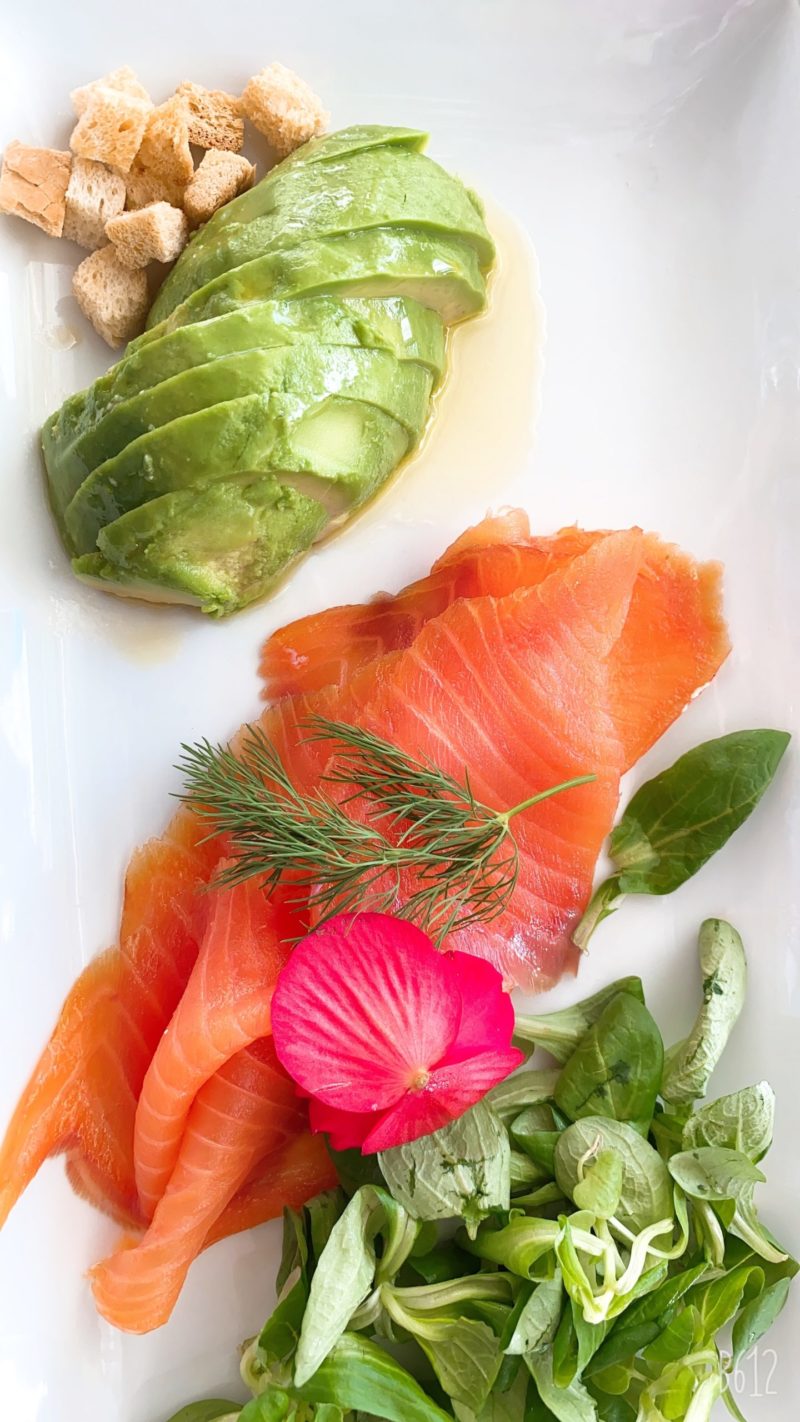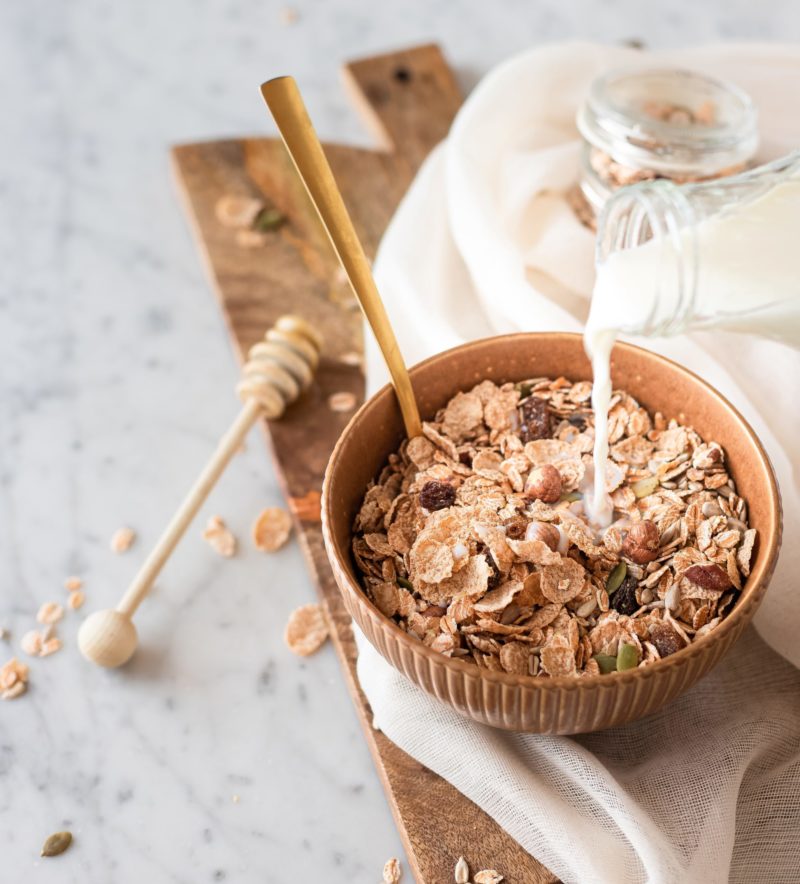December 2021 The Benefits of Vitamin D
By Heather McDowell
Looking for ways to stay healthy this winter? With the darker winter months, Vitamin D “the sunshine vitamin” is harder to get, but is still needed to stay healthy. Your body can make Vitamin D from sun exposure, but it’s also important to get this nutrient from food. Read on to learn about the importance of getting enough Vitamin D and what foods to get it from!

Where does Vitamin D come from?
Vitamin D is a nutrient that is found in some foods and it can be created by the body. This nutrient is generally found in fish, egg yolks, dairy products, fortified mushrooms, cereals, and fortified fruit juices. The body has the ability to create this nutrient when heat from the sun triggers a reaction in the skin to activate this vitamin.
How is Vitamin D different?
Vitamin D is different from other vitamins in that it is absorbed with fat from the intestines into the blood (other “fat-soluble” vitamins include A, E, and K). In food sources, Vitamin D is found primarily in fats, such as in fatty fish like salmon, herring, and sardines, and in the fat in egg yolks. Vitamin D is also unique because it is created by the body when sun hits the skin, then undergoes several changes in the body so that it can be used.
Why is Vitamin D important?
Vitamin D has an important role in almost every part of the body, including the bones, muscles, immune system, and brain. Vitamin D works to control calcium levels in the blood. This calcium then goes on to build bones and is used by muscles. Vitamin D supports immune cells and improves the immune response to germs. In the brain, Vitamin D supports cell health and offers protective benefits against diseases such as Alzheimer’s and Dementia.
The primary function of Vitamin D is to support bone maintenance and growth at all stages of life. This nutrient is especially important for infants and children due to the fact that they are growing and need enough Vitamin D for proper bone formation. Vitamin D supports bone health throughout adulthood, but becomes even more important for older adults who may eat fewer foods rich in this nutrient and get less sun exposure. Also, there tends to be a lesser ability for their skin to convert the vitamin to its usable form. Low levels of Vitamin D can lead to fragile bones and increase the risk of fractures.
How much vitamin D do I need?
| Age** | Vitamin D RDA |
| 0-12 months old | 400 IU*/day |
| 1-70 years old | 600 IU/day |
| >70 years old | 800 IU/day |
| *International Units (IU)
**Recommendation for both males and females |
|
This table lists the daily recommendations (RDA- Recommended Daily Allowance) for Vitamin D for different age groups. For context, 1 cup of Vitamin D fortified 2% milk has 120 IU of Vitamin D, and 3 ounces of salmon has about 570 IU of Vitamin D.
Many Americans have low levels of Vitamin D and would benefit from eating more foods rich in this nutrient. If you are concerned about your Vitamin D levels, it is advised to discuss supplements with your doctor and registered dietitian before starting. The body can store Vitamin D for a long period of time and too much may lead to vitamin toxicity.
What are good sources of Vitamin D?

There are a variety of foods that contain Vitamin D. These include fatty fish, such as salmon, herring, and sardines, egg yolks, dairy products, fortified cereals and fruit juices, and mushrooms that have been grown in UV light. Here’s some ways you can eat more Vitamin D rich foods:
- Eggs- make whole wheat bread French toast or a veggie-egg hash for breakfast. Use hard-boiled eggs as your protein for a salad or make a savory quiche.
- Mushrooms- add sautéed mushrooms to a breakfast scramble, sandwich or burger or include them in fajitas, soups, and stews.
- Salmon and other fatty fish- make salmon patties, add salmon to a breakfast sandwich or make a fish and rice poke-style bowl. Try our Zesty Lemon Dill Salmon as a tasty way to benefit from this valuable vitamin!
- Milk/yogurt/cheese- prepare your morning oatmeal with milk instead of water, use yogurt as a base for a fruit smoothie, and consider having cheese with nuts and fresh fruit for a snack.
Prioritize the sunshine vitamin this winter by brightening up your meals with these delicious and nutritious Vitamin D additions!
Get to know the Author:
McDowell is originally from Lakewood, Colorado, and is a senior undergraduate student studying nutrition and food science at Colorado State University. She is interested in working in the area of food systems and in promoting agriculture’s connection to nutrition. Particularly, she is interested in learning more about the work being done to improve our current food systems so that they are sustainable and accessible to all populations.
Ultimately, McDowell wants to become a Registered Dietitian and get involved with the USDA or work in an area related to food production. McDowell was also the KRNC Student Spotlight in November 2021.
More Information:
For additional resources to healthy eating, check out these programs from our registered dietitian nutritionists. Find delicious and healthy recipes on our Recipes page! More health tips are also available at the College of Health and Human Sciences Pinterest board. Lastly, don’t forget to sign up for the KRNC monthly newsletter!


